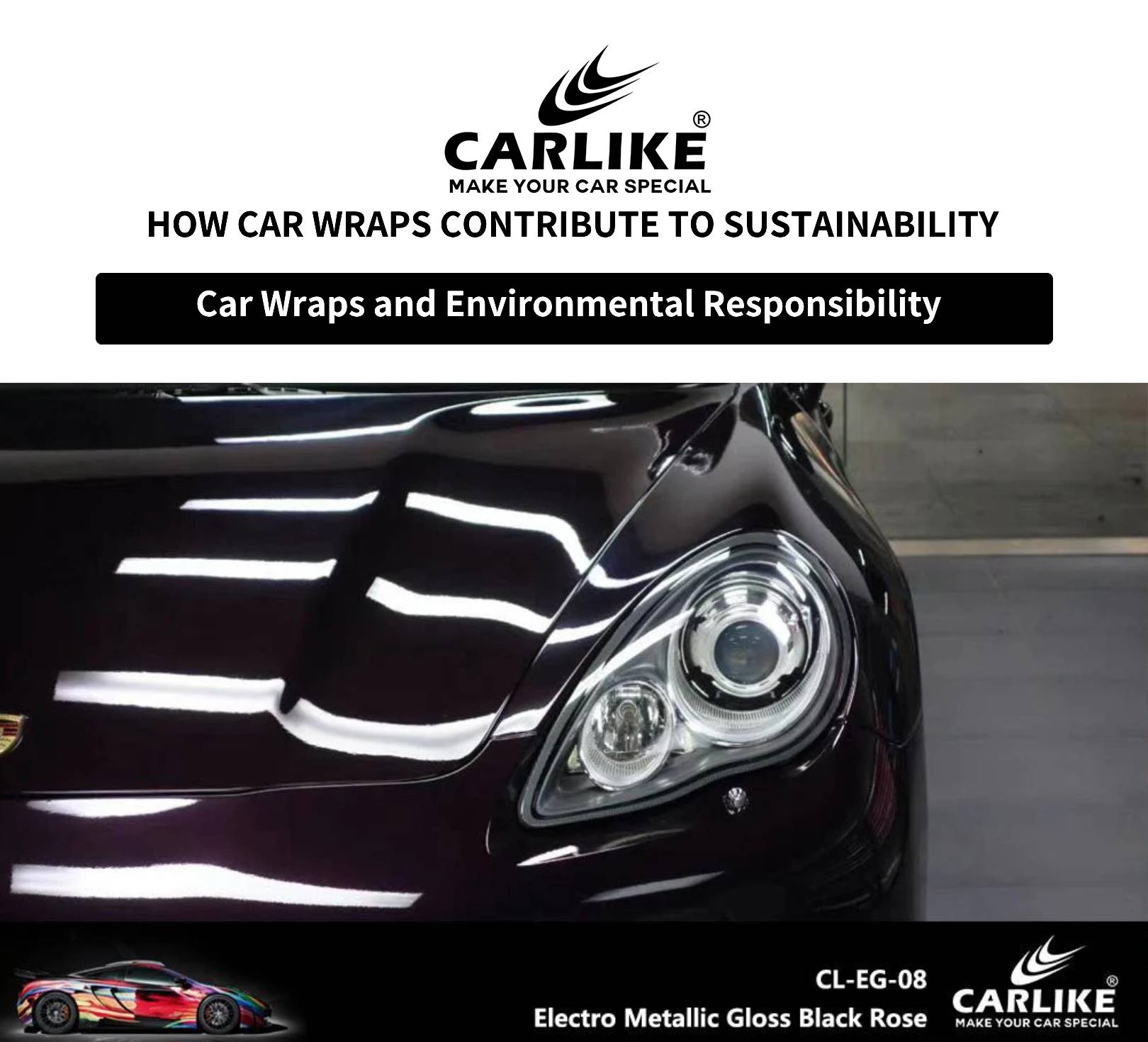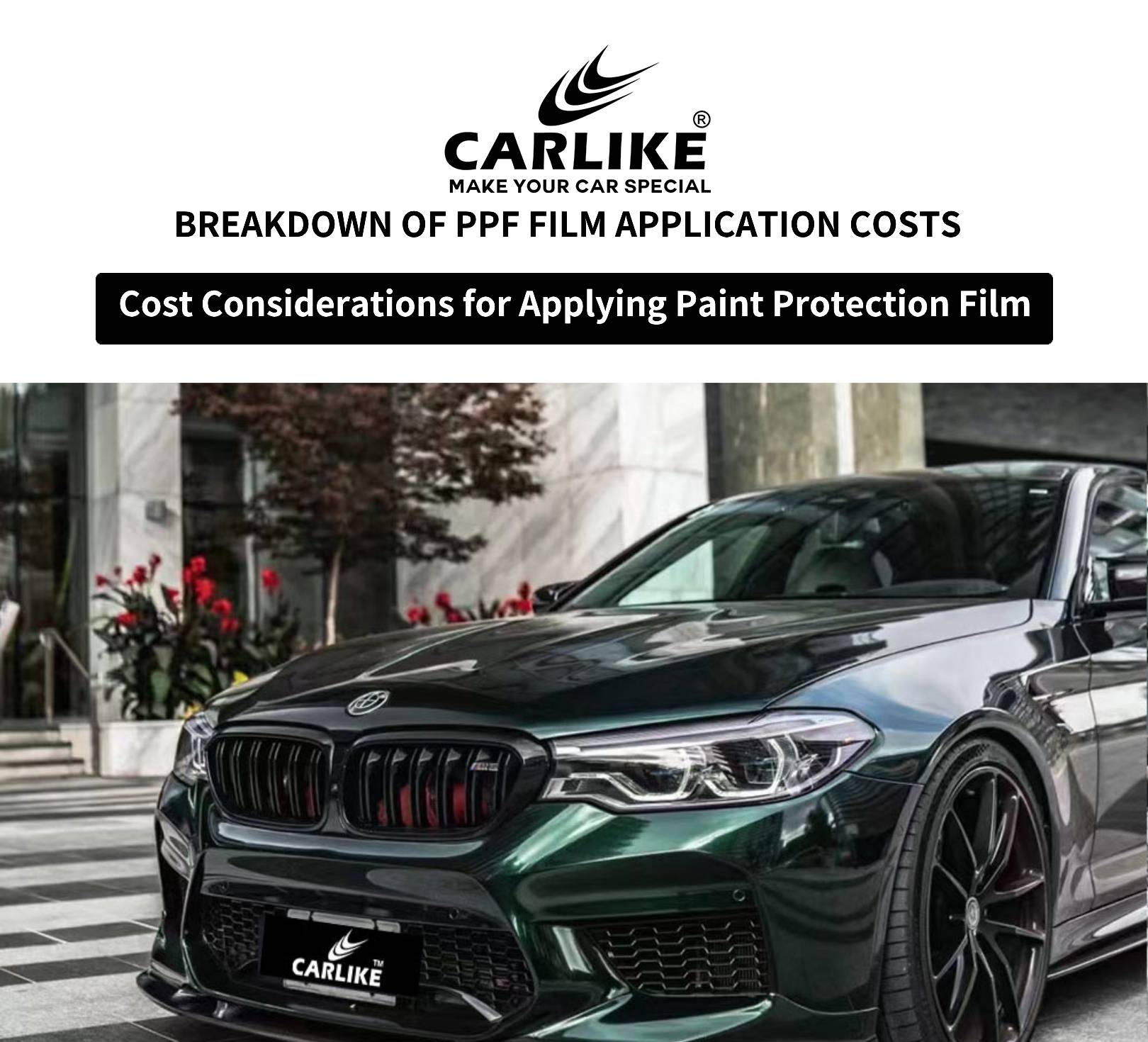CARLIKE-Make Your Car Special.

Overview of Paint Protection Film (PPF)
Paint Protection Film (PPF) is a transparent, durable material designed to protect a vehicle's paint from scratches, chips, and other damage caused by road debris, UV rays, and environmental factors. Typically made from urethane, PPF is applied to high-impact areas of a car, such as the hood, bumpers, and side mirrors. This film acts as a barrier, preserving the vehicle's appearance and maintaining its resale value.
Importance of Maintaining PPF for Longevity and Effectiveness
Maintaining PPF is crucial to ensure its longevity and effectiveness. Proper care helps to prevent discoloration, yellowing, and peeling, which can compromise the film's protective qualities. Regular cleaning and avoidance of harsh chemicals can keep the film looking clear and pristine. Additionally, periodic inspections for signs of damage allow for timely repairs or replacements, ensuring continuous protection for the underlying paint. By investing time in maintenance, car owners can maximize the benefits of PPF, ultimately extending the life of their vehicle's exterior finish.
Regular Cleaning of Paint Protection Film (PPF)
Maintaining the clarity and effectiveness of your Paint Protection Film (PPF) starts with regular cleaning. This not only preserves its appearance but also enhances its protective qualities.
A. Recommended Cleaning Products
For optimal results, use pH-balanced soap specifically designed for automotive finishes. Microfiber cloths are essential, as they are gentle on the film and help prevent scratches.
B. Step-by-Step Cleaning Process
- Rinse the Vehicle: Begin by rinsing the entire vehicle with water to remove loose dirt and debris.
- Apply Soap and Gently Scrub: Mix the pH-balanced soap with water and apply it using a microfiber cloth. Gently scrub the PPF areas in a circular motion.
- Rinse Thoroughly: After scrubbing, rinse the vehicle again to wash away any soap residue.
- Dry with a Microfiber Towel: Finally, dry the surfaces with a clean microfiber towel to prevent water spots and maintain a clear finish.

Avoiding Harsh Chemicals
To maintain the integrity and appearance of your Paint Protection Film (PPF), it’s crucial to avoid harsh chemicals that can cause damage.
A. Chemicals to Avoid
- Solvents: Products containing strong solvents, such as acetone or ammonia, can degrade the adhesive properties of PPF and lead to peeling or discoloration.
- Abrasive Cleaners: Cleaners with gritty or abrasive components can scratch the surface of the film, compromising its protective barrier and making it more susceptible to damage.
B. Importance of Using Gentle Products
Using gentle, pH-balanced cleaning products is vital for preserving the longevity and effectiveness of PPF. These products are formulated to clean without stripping away the film's protective qualities or causing physical harm. Gentle cleaning helps maintain the film’s clarity, ensuring it continues to protect the underlying paint from environmental hazards. By opting for safer alternatives, you can prolong the life of your PPF and keep your vehicle looking its best.

Addressing Scratches and Swirl Marks
Maintaining the appearance of your Paint Protection Film (PPF) includes addressing any scratches or swirl marks that may occur over time.
A. Identifying Minor Scratches
Minor scratches are often superficial and may not penetrate the film itself. They can be identified as fine lines or marks on the surface that do not change the color of the underlying paint. It’s essential to regularly inspect the PPF, especially after washing or waxing, to catch these imperfections early.
B. Using Self-Healing Properties of PPF
One of the significant advantages of modern PPF is its self-healing properties. Many high-quality films are designed to heal from minor scratches and swirl marks when exposed to heat. You can use a heat gun or a warm water rinse to gently heat the affected area, allowing the film to relax and restore its smooth appearance.
C. When to Seek Professional Help for Deeper Damage
If scratches are deeper or if the film shows signs of bubbling, peeling, or discoloration, it’s best to seek professional help. A specialist can assess the damage and determine whether the film can be repaired or if it needs replacement. Professional intervention ensures that your PPF continues to provide optimal protection for your vehicle's paint. By addressing these issues promptly, you can maintain the aesthetic and functional benefits of your PPF.

Protecting from UV Rays and Environmental Factors
Benefits of Parking in the Shade or Using Car Covers
Parking in the shade or using car covers offers significant protection for your vehicle, especially when it comes to maintaining the integrity of the Paint Protection Film (PPF).
UV Protection: Direct sunlight can lead to UV damage, causing the PPF to yellow and discolor over time. Parking in the shade or using a cover minimizes exposure to harmful rays, preserving the film's clarity and color.
Temperature Regulation: Shade helps keep your vehicle cooler, reducing heat buildup that can affect the adhesive properties of the PPF. Car covers provide an additional layer of insulation, helping to maintain a stable temperature.
Protection from Environmental Debris: Parking in the shade or using covers shields the vehicle from bird droppings, tree sap, and other contaminants that can damage both the PPF and the underlying paint.
Importance of Regular Maintenance to Prevent Yellowing and Discoloration
Regular maintenance is crucial for preventing yellowing and discoloration of PPF. Here are some key aspects:
Cleaning Routine: Establishing a consistent cleaning schedule using gentle, pH-balanced products helps remove dirt and contaminants that can contribute to discoloration. This prevents buildup that could damage the film over time.
Inspection and Care: Regularly inspecting the PPF for signs of damage or wear allows for early intervention. Addressing minor issues promptly can prevent more significant problems, including yellowing.
Protection from Elements: Regular maintenance, including parking in the shade and using covers, helps minimize exposure to elements that can cause wear and fading. This proactive approach prolongs the lifespan of the PPF and maintains its protective qualities.

Long-Term Care Tips
Maintaining your Paint Protection Film (PPF) over the long term requires attention and care. Here are some essential tips:
A. Periodic Inspections for Wear and Tear
Regularly inspect your PPF for signs of wear, such as scratches, bubbling, or peeling. Look for areas that may have become discolored or damaged. Early detection of these issues allows for timely repairs, helping to maintain the film's protective properties and overall appearance.
B. Professional Maintenance Options
Consider scheduling professional maintenance at least once a year. Professionals can perform thorough cleanings, detailed inspections, and repairs as needed. They have specialized tools and products that can address issues effectively, ensuring your PPF remains in optimal condition.
C. Benefits of Ceramic Coatings on Top of PPF
Applying a ceramic coating over your PPF can provide additional protection. This coating enhances hydrophobic properties, making it easier to clean and helping to repel dirt and contaminants. It also adds an extra layer of UV protection, reducing the risk of yellowing and discoloration while enhancing the overall shine and appearance of your vehicle. By combining ceramic coatings with PPF, you create a robust defense against the elements, ensuring your vehicle looks great for years to come.
Incorporating these long-term care tips will help you maintain the effectiveness and aesthetic appeal of your PPF, ultimately extending its lifespan and protecting your vehicle's finish.




